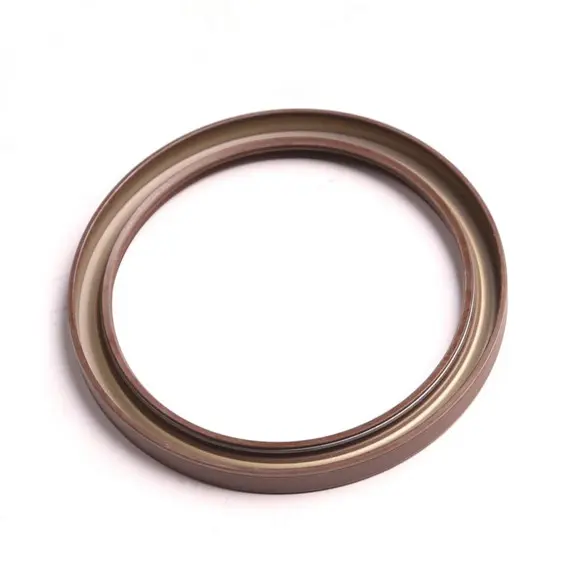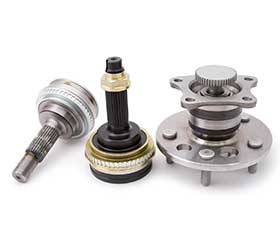3 月 . 05, 2025 04:59 Back to list
Rotary wheel of auto parts
Changing Spark Plugs in a Car An Expert's Guide to Improving Performance and Efficiency
1. Safety First Ensure the engine is completely cool. Disconnect the battery to prevent accidental electrical discharge during the replacement process. 2. Locate and Prepare Spark plugs are typically found along the side of the engine in a straight line in inline engines or perpendicular rows in V-shaped engines. Remove any necessary engine covers or components to access the plugs efficiently. 3. Remove the Ignition Coils/Wires Gently disconnect ignition wires or coils from the existing spark plugs. Label each wire or mark its position to prevent confusion upon reinstallation. 4. Extract the Old Spark Plugs Using your spark plug wrench, turn each plug counterclockwise to remove. If resistance is met, apply penetrating oil and allow time before making another attempt. Inspect the old plugs for signs of wear or damage, as these can provide insights into engine health. 5. Check and Adjust New Spark Plugs Using the gap gauge, ensure each new plug matches the manufacturer’s specific gap recommendations. Adjust the gap gently with a tool if necessary. 6. Install New Spark Plugs Apply a small amount of anti-seize lubricant to the threads of each new plug. Carefully insert each into its respective cylinder by hand to prevent cross-threading, then use the torque wrench to secure them in place, adhering to the torque specifications outlined in the manual. 7. Reattach Ignition Coils/Wires Carefully reconnect each to its corresponding plug. Double-check all connections are firm and correctly placed. 8. Final Check Reconnect the battery and start the engine to ensure smooth operation. Listen for irregular sounds and perform a test drive to heed any performance-related issues. Professional Tips - Always replace spark plugs as a complete set to ensure uniform performance. - Opt for quality spark plugs that match your engine’s specifications. High-performance plugs offer better ignition but require precise handling. - Maintain a regular spark plug inspection schedule, ideally every 20,000 to 40,000 miles, depending on your driving conditions and vehicle type. In mastering the art of changing spark plugs, car owners not only enhance vehicle performance and fuel economy but also cultivate an invaluable skill set. This expertise offers peace of mind and financial savings, underscoring the enduring wisdom of automotive self-reliance. Through prudent maintenance and attention to detail, the simple act of replacing spark plugs becomes a cornerstone of responsible car ownership and authoritative mechanical proficiency.


1. Safety First Ensure the engine is completely cool. Disconnect the battery to prevent accidental electrical discharge during the replacement process. 2. Locate and Prepare Spark plugs are typically found along the side of the engine in a straight line in inline engines or perpendicular rows in V-shaped engines. Remove any necessary engine covers or components to access the plugs efficiently. 3. Remove the Ignition Coils/Wires Gently disconnect ignition wires or coils from the existing spark plugs. Label each wire or mark its position to prevent confusion upon reinstallation. 4. Extract the Old Spark Plugs Using your spark plug wrench, turn each plug counterclockwise to remove. If resistance is met, apply penetrating oil and allow time before making another attempt. Inspect the old plugs for signs of wear or damage, as these can provide insights into engine health. 5. Check and Adjust New Spark Plugs Using the gap gauge, ensure each new plug matches the manufacturer’s specific gap recommendations. Adjust the gap gently with a tool if necessary. 6. Install New Spark Plugs Apply a small amount of anti-seize lubricant to the threads of each new plug. Carefully insert each into its respective cylinder by hand to prevent cross-threading, then use the torque wrench to secure them in place, adhering to the torque specifications outlined in the manual. 7. Reattach Ignition Coils/Wires Carefully reconnect each to its corresponding plug. Double-check all connections are firm and correctly placed. 8. Final Check Reconnect the battery and start the engine to ensure smooth operation. Listen for irregular sounds and perform a test drive to heed any performance-related issues. Professional Tips - Always replace spark plugs as a complete set to ensure uniform performance. - Opt for quality spark plugs that match your engine’s specifications. High-performance plugs offer better ignition but require precise handling. - Maintain a regular spark plug inspection schedule, ideally every 20,000 to 40,000 miles, depending on your driving conditions and vehicle type. In mastering the art of changing spark plugs, car owners not only enhance vehicle performance and fuel economy but also cultivate an invaluable skill set. This expertise offers peace of mind and financial savings, underscoring the enduring wisdom of automotive self-reliance. Through prudent maintenance and attention to detail, the simple act of replacing spark plugs becomes a cornerstone of responsible car ownership and authoritative mechanical proficiency.